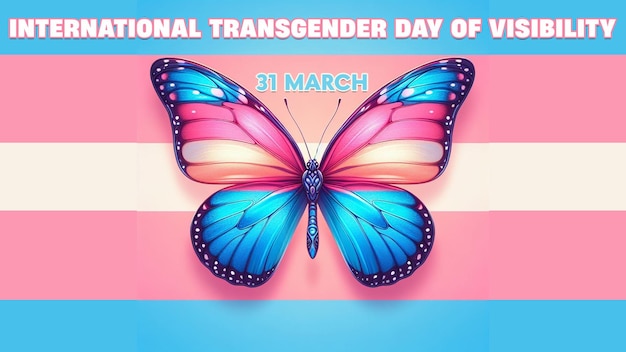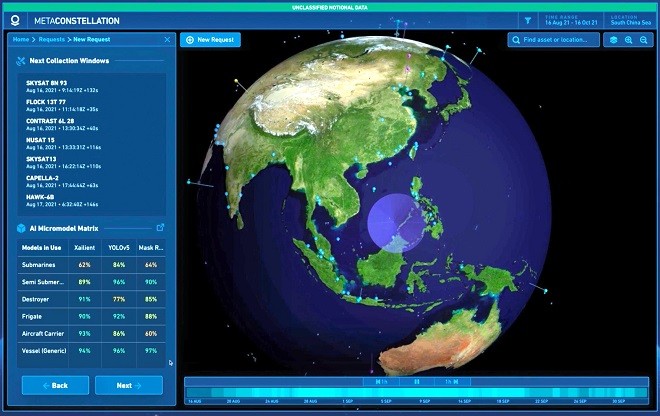International Transgender Day Of Visibility: Practical Steps For Allyship

Table of Contents
Educate Yourself About Transgender Identities and Issues
Understanding transgender identities and the issues faced by the transgender community is the foundation of meaningful allyship. This involves learning about the nuances of gender identity and expression, as well as the historical context of the transgender rights movement.
Understanding Gender Identity and Expression
Gender identity is one's internal sense of being a man, woman, both, neither, or somewhere else along the gender spectrum. Gender expression refers to how someone outwardly presents their gender through clothing, behavior, and other means. It's crucial to remember that gender identity and expression are distinct and not always aligned. For reliable information, explore resources from reputable organizations such as GLAAD (https://www.glaad.org/) and The Trevor Project (https://www.thetrevorproject.org/).
- Key Terms: cisgender, transgender, non-binary, gender fluid, genderqueer, agender.
- Common Misconceptions: Transgender identity is a choice; transgender individuals are only interested in sex reassignment surgery; all transgender people identify in the same way. These are harmful stereotypes.
- Diversity within the Transgender Community: The transgender community is incredibly diverse, encompassing a wide range of identities, experiences, and backgrounds. There is no single "transgender experience."
Learning About Transgender History and Activism
The transgender rights movement has a rich and complex history, marked by both significant progress and ongoing struggles. Learning about key figures, milestones, and challenges is essential for understanding the context of current issues.
- Key Milestones and Events: The Stonewall Riots, Marsha P. Johnson's activism, the ongoing fight for legal recognition and protection.
- Ongoing Struggles and Challenges: Discrimination, violence, lack of access to healthcare, and systemic transphobia continue to impact transgender individuals disproportionately.
- Resources: Explore books, documentaries, and articles on transgender history and activism. A good starting point is the GLAAD website's extensive resources section.
Using Inclusive Language and Respectful Terminology
Language is a powerful tool, and using inclusive language is a fundamental aspect of allyship. This involves avoiding misgendering and deadnaming, and employing gender-neutral language whenever possible.
Avoiding Misgendering and Deadnaming
Misgendering is using incorrect pronouns or gendered terms to refer to someone. Deadnaming is using someone's former name, which they no longer use, after they have transitioned. Both actions are deeply disrespectful and can be incredibly hurtful.
- Harmful Effects: Misgendering and deadnaming invalidate a person's identity and can contribute to feelings of anxiety, depression, and isolation.
- Asking for Pronouns: Politely asking, "What pronouns do you use?" is always appropriate. Many people include their pronouns in their email signatures or social media profiles.
- Respecting Chosen Names: Using someone's chosen name demonstrates respect for their identity and affirms their authenticity.
Using Gender-Neutral Language
Incorporating gender-neutral language into your everyday vocabulary helps create a more inclusive environment for everyone.
- Gender-Neutral Alternatives: Instead of "guys," use "folks," "everyone," or "y'all." Instead of "chairman," use "chairperson" or "chair."
- Addressing Groups: Use inclusive language when addressing groups of people. For example, instead of assuming gender when addressing a group, you can say "everyone," "folks," or "you all."
- Creating a Safe Space: Make it clear that sharing pronouns is welcome and encouraged in your environment.
Advocate for Transgender Rights and Inclusion
Allyship extends beyond individual interactions; it involves actively advocating for transgender rights and inclusion on a broader level.
Supporting Legislation and Policies
Support legislation that protects transgender rights and promotes equality.
- Supportive Policies: Non-discrimination laws, access to healthcare, bathroom access policies that affirm transgender identities.
- Contacting Representatives: Find your local representatives' contact information online and voice your support for inclusive legislation.
- Advocacy Groups: Join or support organizations dedicated to transgender rights advocacy.
Speaking Out Against Transphobia
Challenge transphobic comments and actions whenever you safely can.
- Responding to Transphobia: Speak up respectfully but firmly against transphobic remarks. You can use phrases such as, "That's not okay," or "That's a harmful stereotype."
- Reporting Discrimination: Report instances of discrimination and harassment to the appropriate authorities.
- Creating Safer Environments: Your allyship helps build safer and more inclusive communities for transgender individuals.
Providing Support and Resources to Transgender Individuals
Understanding the challenges faced by transgender individuals and knowing where to find support are crucial for effective allyship.
Understanding the Challenges Faced by Transgender People
Transgender individuals face unique challenges, including discrimination, violence, and limited access to healthcare. These challenges significantly impact their mental and physical health.
- Impact of Systemic Discrimination: Discrimination leads to increased rates of mental health issues, unemployment, and homelessness amongst transgender people.
- Importance of Mental Health Support: Access to culturally competent mental health services is crucial for transgender individuals.
Where to Find Support and Resources
Numerous organizations offer support, advocacy, and education for transgender individuals and their allies.
- National and Local Organizations: Research organizations in your area that provide support and resources.
- Helplines and Crisis Hotlines: The Trevor Project offers a vital crisis intervention helpline for LGBTQ youth.
- Supportive Communities: Creating and fostering supportive communities is essential.
Celebrating the International Transgender Day of Visibility and Beyond
International Transgender Day of Visibility is a call to action. Education, inclusive language, advocacy, and providing support are critical components of allyship. It’s not just about one day; it's about consistent action throughout the year. Continue your allyship beyond ITDoV by donating to relevant organizations, educating others in your community, and supporting transgender-owned businesses. Let's make every day a day of visibility for the transgender community. Let's continue to celebrate the International Transgender Day of Visibility and its powerful message of inclusion and respect.

Featured Posts
-
 High Potential Season 1 Morgans 5 Biggest Strategic Mistakes
May 10, 2025
High Potential Season 1 Morgans 5 Biggest Strategic Mistakes
May 10, 2025 -
 Ftc Launches Investigation Into Open Ai And Chat Gpt
May 10, 2025
Ftc Launches Investigation Into Open Ai And Chat Gpt
May 10, 2025 -
 Justice Sought Family Devastated By Senseless Racist Killing
May 10, 2025
Justice Sought Family Devastated By Senseless Racist Killing
May 10, 2025 -
 Elizabeth Stewart X Lilysilk A Spring Capsule Collection Of Sustainable Luxury
May 10, 2025
Elizabeth Stewart X Lilysilk A Spring Capsule Collection Of Sustainable Luxury
May 10, 2025 -
 Investing In Palantir Analyzing The Projected 40 Increase By 2025
May 10, 2025
Investing In Palantir Analyzing The Projected 40 Increase By 2025
May 10, 2025
